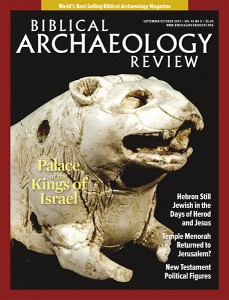First Person: Did the Kingdoms of Saul, David and Solomon Actually Exist?

Amihai Mazar (better known as Ami) is one of Israel’s most highly regarded archaeologists. He recently retired from the Hebrew University of Jerusalem. I remember long ago when I featured him on the cover of BAR together with his famous uncle, Benjamin Mazar, a former president of the Hebrew University and a famous archaeologist; Ami was angry. He didn’t want to be pictured with his uncle. Ami wanted to make it on his own—not because of his relationship to his distinguished uncle. Well, Ami certainly has now made it on his own.
This is by way of introducing a seminal article that he recently published that includes a critical assessment of the historicity of the United Monarchy of Israel. It is a thoroughly balanced review of the matter, considering both the Biblical text and the archaeological evidence. It is too detailed to rehearse here in detail—and, as he says, it’s “highly specialized and complicated”—but it is worthwhile just to set forth the issues and Ami’s conclusions.1
The Biblical narratives, he tells us, although written hundreds of years after the reigns of Saul, David and Solomon, “retain memories of reality.” It’s these “cultural memories … embedded in the Biblical narratives” that are sometimes captured with the help of archaeology. And the “contribution of archaeology to the study of the past ever increases.”
Already a library member? Log in here.
Institution user? Log in with your IP address.

